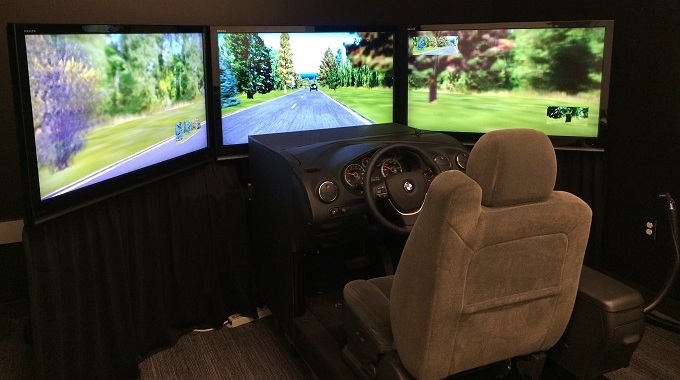Research In Action
Research In Action
Breadcrumb

I have spent the past five years studying why and how teens crash. Although the crash rate for newly licensed drivers is highest the first year after licensure, it remains high for several more years despite gaining driving experience. This may not seem to make sense, but several studies show that many newly-licensed teen drivers exit the learner period with significant skill deficits that can lead to crashes. Teen driver crashes are not a black box that we don’t know anything about. We are decoding the black box to gain a clear understanding of how teens crash.
Previous CIRP@CHOP and other research across the globe has helped determine the scenarios in which teens crash, the skill-related errors they make, and risks related to crash likelihood. Building on that research, we report in a new study published in Injury Prevention on how we developed and validated the Simulated Driving Assessment (SDA), a simulator-based driver assessment that can differentiate between skilled and non-skilled drivers.
The SDA offers a safe way to assess novice teen drivers’ skill levels in actual crash scenarios, drawn from the science of teen driving, the epidemiology of teen driver crashes, and experts in the field. By examining multiple performance measures in scenarios designed to replicate the most common crash configurations, the SDA provides information about skill deficits in hazardous situations.
Critical Errors Leading to Simulated Crashes
What we saw with our newly licensed teens (within three months of licensure) during the study was fascinating! Nearly 43 percent had a simulated crash at least once due to making crucial errors, such as speeding, inadequate braking in hazardous situations, and not scanning for hazards and at intersections. From our videos and simulator and eye tracking data, we could see the errors teens were making in navigating complex driving scenarios. However, we are still encouraged. Over half of the teens in our study drove safely, making few errors, and avoiding all the potential crashes in the SDA.
All of the simulated crashes in our study could have been avoided if the teens had the skills needed to navigate complex driving situations safely. It is possible for teens to gain these critical skills before getting licensed. We want to make sure that all teens have that ability.
To see what I mean, watch these short video clips showing critical errors that result in the most serious crashes:
- Inadequate braking in a hazardous situation
- Following another vehicle too closely
- Lack of scanning at a left turn

